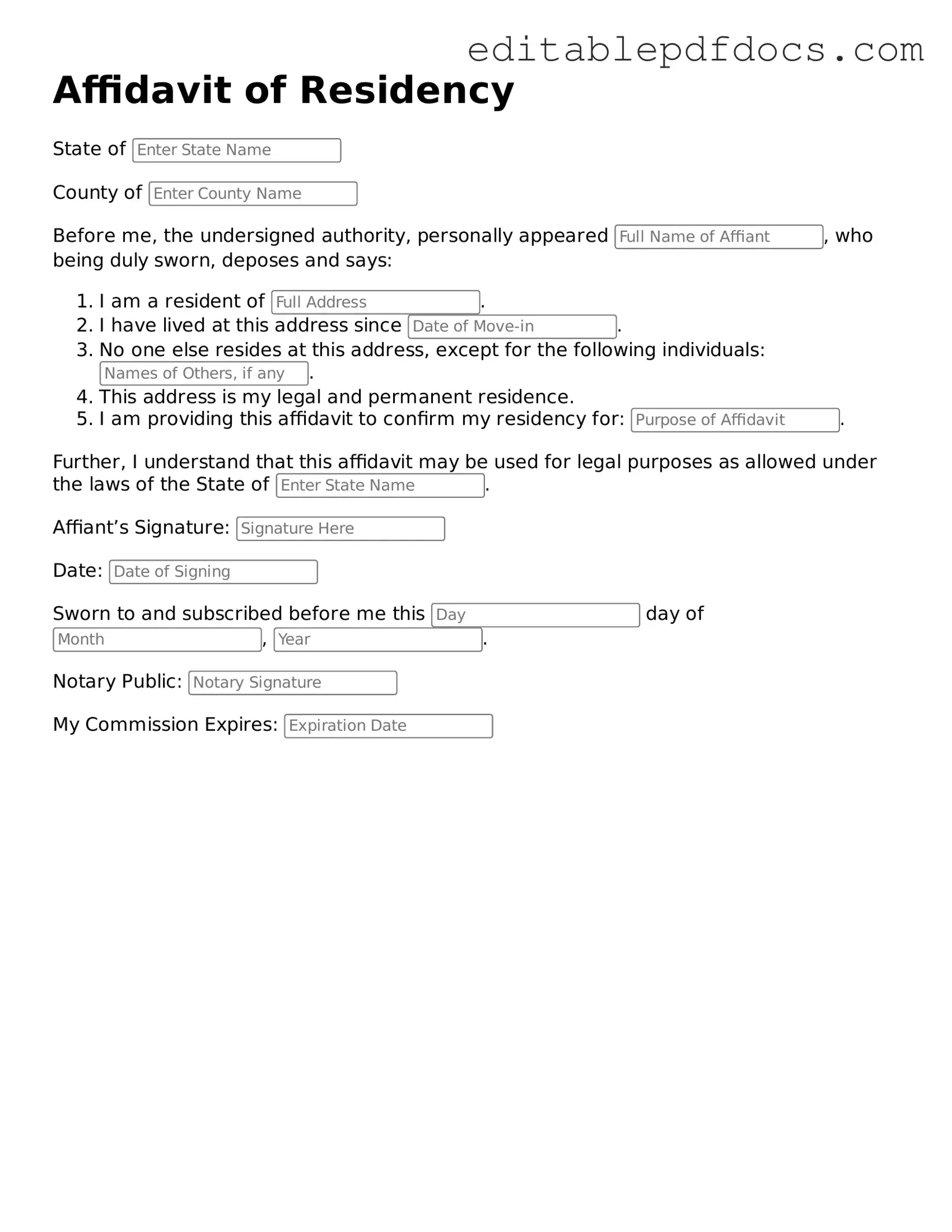Filling out the Affidavit of Residency form can be straightforward, but many people make common mistakes that can lead to delays or complications. One frequent error is providing incomplete information. When sections are left blank, it can create confusion and may require additional follow-up, which slows down the process.
Another mistake involves incorrect personal details. This includes misspelling names, wrong addresses, or inaccurate dates. Such errors can lead to significant issues, especially if the affidavit is used for legal purposes. Double-checking all personal information before submission is crucial.
Some individuals fail to sign the affidavit. A signature is often required to validate the document. Without it, the affidavit may not be accepted. It's important to ensure that all required signatures are included before submitting the form.
People sometimes forget to date the affidavit. A missing date can raise questions about the document's validity. Including the date of signing is essential to confirm when the affidavit was completed.
Another common mistake is not having the affidavit notarized when required. Many jurisdictions require notarization for affidavits to be legally binding. Failing to have the document notarized can render it ineffective.
Some individuals may use outdated forms. It's essential to check that the most current version of the Affidavit of Residency form is being used. Using an old version can lead to complications, as requirements may have changed.
People often overlook the need for supporting documents. Depending on the situation, additional proof of residency may be necessary. Not providing these documents can weaken the affidavit's credibility.
Lastly, some individuals do not keep a copy of the completed affidavit. Keeping a copy is important for personal records and can be useful if questions arise later. It ensures that there is a reference point for what was submitted.
